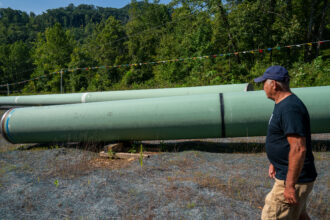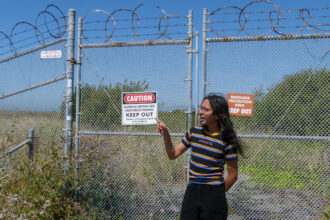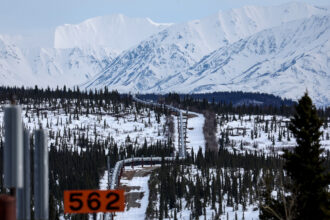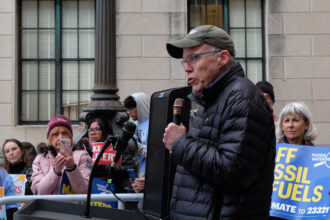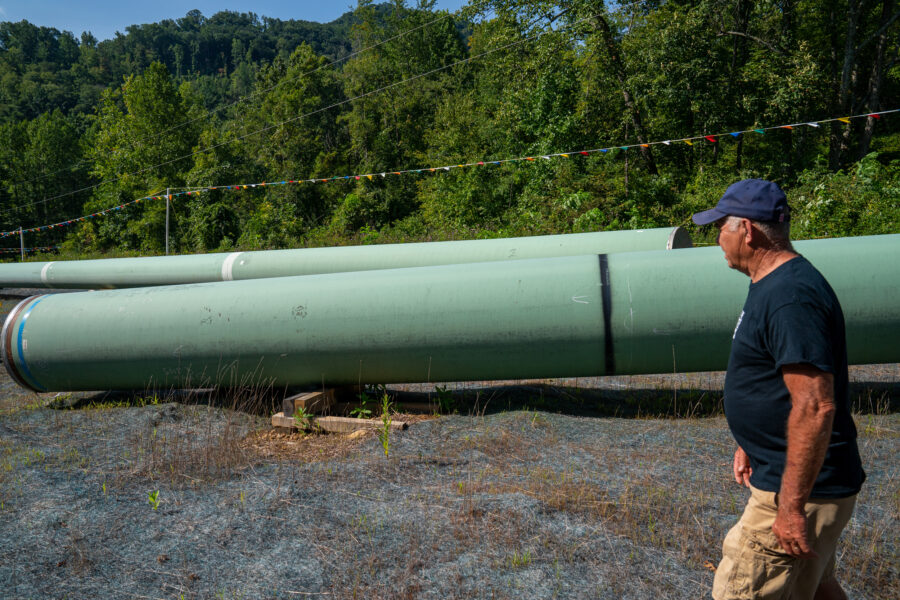The Obama administration announced plans Tuesday to open up parts of the Arctic and waters off the mid- and south Atlantic coasts to drilling. The contentious new plan, unveiled by the Interior Department, proposes 14 potential leases between 2017 and 2022 in parts of the Arctic, Gulf of Mexico and off the coasts of Virginia, Georgia, North Carolina and South Carolina. The leases open up drilling on nearly 80 percent of undiscovered, potentially recoverable resources off the nation’s outer continental shelf.
Drilling remains off-limits off the Pacific coast, where political opposition to offshore oil and gas exploration has long been fierce. Some areas of the Beaufort and Chukchi seas off the Alaskan coast—which the administration deemed “simply too special to develop”—have also been banned from leasing.
Here’s a map of the areas that were previously open to drilling and the new areas proposed for leasing. Click to enlarge.

Lawmakers in southeastern states have long sought to open up the Atlantic coast to drilling, in part because a portion of the royalties from drilling will be redirected to their state’s coffers. According to estimates by the Bureau of Ocean Energy Management, Regulation and Enforcement over 3.3 billion barrels of potentially recoverable oil and 31.3 trillion cubic feet of gas lie beneath the Atlantic outer continental shelf. For comparison, Saudi Arabia produced over 4 billion barrels of oil and 3.6 trillion cubic feet of gas in 2013.
“Opening new areas to drilling is necessary for an energy renaissance,” said Erik Milito, director of upstream and industry operations for the American Petroleum Institute. “The energy America produces offshore today is only possible because of solid decisions made by regulators and the private sector.”
But environmental groups worry that leasing new land not only puts coastal ecosystems at risk of a spill but increases the nation’s dependence on fossil fuels, moving the country further away from reaching its climate goals. Just a few days ago environmental groups celebrated after President Obama proposed setting aside over 12 million acres in Alaska’s Arctic National Wildlife Refuge as wilderness.
“The announcement today is sending mixed signals. Obama is picking and choosing which climate issues to tackle,” said Claire Douglass, the campaign director for climate and energy at Oceana. “The fact of the matter is we need to redouble our efforts and develop our offshore renewable energy resources.”
The Atlantic coast has been under a longstanding moratorium on drilling since the 1980s. In 2010, the Obama administration briefly considered opening up the coastal waters off Virginia to drilling but quickly withdrew plans following the BP Deepwater Horizon oil spill in the Gulf of Mexico.
The plan will be finalized later in the year following a 60-day public comment period and the publication of a draft environmental impact statement.
About This Story
Perhaps you noticed: This story, like all the news we publish, is free to read. That’s because Inside Climate News is a 501c3 nonprofit organization. We do not charge a subscription fee, lock our news behind a paywall, or clutter our website with ads. We make our news on climate and the environment freely available to you and anyone who wants it.
That’s not all. We also share our news for free with scores of other media organizations around the country. Many of them can’t afford to do environmental journalism of their own. We’ve built bureaus from coast to coast to report local stories, collaborate with local newsrooms and co-publish articles so that this vital work is shared as widely as possible.
Two of us launched ICN in 2007. Six years later we earned a Pulitzer Prize for National Reporting, and now we run the oldest and largest dedicated climate newsroom in the nation. We tell the story in all its complexity. We hold polluters accountable. We expose environmental injustice. We debunk misinformation. We scrutinize solutions and inspire action.
Donations from readers like you fund every aspect of what we do. If you don’t already, will you support our ongoing work, our reporting on the biggest crisis facing our planet, and help us reach even more readers in more places?
Please take a moment to make a tax-deductible donation. Every one of them makes a difference.
Thank you,





